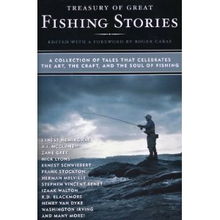Content:
Fishing, an ancient and cherished pastime, has been a source of relaxation and sustenance for countless generations. Whether you're a seasoned angler or a beginner looking to cast your line into the unknown, mastering the art of fishing can be an incredibly rewarding experience. One of the most crucial elements of fishing is the use of the fishing rod, which serves as the bridge between you and the aquatic treasures beneath the surface. In this article, we'll delve into the intricacies of fishing rod techniques and provide you with a step-by-step guide, complete with helpful diagrams, to help you become a fishing pro.
Understanding the Fishing Rod
Before we dive into the techniques, it's essential to understand the different parts of a fishing rod. A typical fishing rod consists of the following components:
- Handle: The part of the rod you hold. It can be made of wood, plastic, or carbon fiber.
- Guides: Small rings that help guide the line through the rod.
- Reel Seat: Where the reel is attached to the rod.
- Butt: The thickest part of the rod that provides strength and stability.
- Tip: The most sensitive part of the rod, where you feel the bite.
Basic Casting Techniques
Casting is the process of throwing your lure or bait into the water. Here are some basic casting techniques to get you started:
Open-Cast Technique:
- Hold the rod with both hands, with your index finger and thumb wrapped around the reel seat.
- Point the rod tip towards the target area and lift the rod to form a loop with the line.
- With a smooth, continuous motion, swing the rod back and forth to propel the line forward.
- As the line reaches the target, release the line by opening your fingers.
Roll Cast Technique:
- This technique is useful in windy conditions or when casting close to the shore.
- Begin by forming a loop with the line and placing your index finger on the line behind the reel.
- With a backcast, bring the rod tip behind you and then move it forward in a smooth roll.
- The line will follow the rod tip, creating a loop that propels the lure forward.
Advanced Casting Techniques
Once you've mastered the basic casting techniques, you can explore more advanced methods:

Trolling: Trolling involves moving your boat at a steady speed and using lures that mimic the movement of fish.
- Attach a lure to the end of your line and let it trail behind the boat.
- Adjust the speed and depth of the lure to match the habits of the fish you're targeting.
Jigging: Jigging involves moving a lure in a vertical motion to attract fish.
- Attach a jighead to your line and let it sink to the desired depth.
- With short, sharp jigs, make the lure look like it's struggling or injured, which can attract predatory fish.
Setting the Hook
Once you've cast your lure, the next crucial step is to set the hook when a fish bites. Here's how to do it:
- Feel the Bite: Be alert and ready to feel the slightest tug on your line.
- Lift the Rod: When you feel a bite, quickly lift the rod tip to set the hook.
- Play the Fish: Once the hook is set, play the fish by guiding it towards the boat or a predetermined location.
Maintaining Your Fishing Rod
To ensure your fishing rod remains in top condition, follow these maintenance tips:
- Clean the Rod: After each use, clean the rod with a soft cloth to remove saltwater or fish slime.
- Check the Guides: Inspect the guides for any signs of damage or dirt and clean them as needed.
- Lubricate the Reel Seat: Apply a small amount of lubricant to the reel seat to prevent corrosion.
Conclusion
Fishing is an art that can be enjoyed by people of all ages and skill levels. By mastering the techniques of using a fishing rod, you'll be well on your way to becoming a proficient angler. Remember to practice regularly, experiment with different techniques, and always prioritize safety and respect for the environment. With patience and dedication, you'll soon be reeling in the big ones and creating memories that will last a lifetime. Happy fishing!












